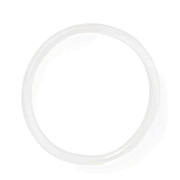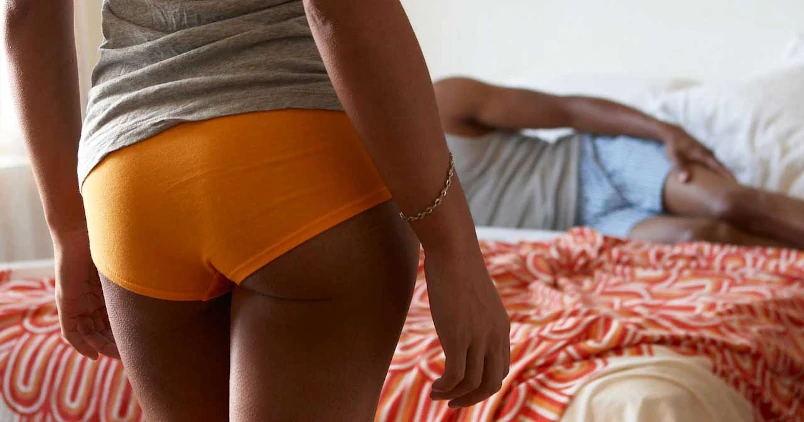Most methods will not cause weight gain. Most people gain weight over time (whether they are using birth control or not), so if you use birth control for a few years, weight gain may not be related to your birth control specifically. The exception to this is the shot. Some people who use the shot will gain some weight. However, the majority of people who use the shot don’t gain much.
Birth control ring

Will birth control make me gain weight?
Will I be able to get the ring out by myself?
Absolutely. To remove the ring, insert one finger into your vagina and hook the edge of it and pull. You might want to practice putting it in and taking it out a few times to get the hang of it.
Want to learn more?
When do I start using the ring?
You can start it right away, as soon as you have your ring. The ring is effective immediately if you get it inserted within 5 days of the start of your period, you’re are switching from another method of hormonal birth control that you’ve been using consistently, it’s been less than 7 days since a first or second-trimester pregnancy ended, or you gave birth in the last 21 days. Otherwise, it will take 7 days after you insert the ring for it to be effective at preventing pregnancy. So, you’ll need to use a backup method, like condoms or internal condoms if you have sex during that time.
Want to learn more?
How long do I leave in the ring?
Each ring has enough hormones for pregnancy prevention for up to 4 weeks. If you want to have a period each month, leave the ring in for 3 weeks, then take it out for the fourth week. Want to skip your period altogether? Leave the ring in for 4 weeks and switch it out for a new ring the same day. Check out the How to Use It section for more details on how to get and use the ring.
Want to learn more?
How long until the ring starts working?
It depends on when you put the ring in and if you are switching from a hormonal method of birth control. The ring is effective immediately if you get it inserted within 5 days of the start of your period, you’re switching from another method of hormonal birth control that you’ve been using consistently, it’s been less than 7 days since a first or second-trimester pregnancy ended, or you gave birth in the last 21 days. Otherwise, it will take 7 days after you insert the ring for it to be effective at preventing pregnancy. So, you’ll need to use a backup method, like condoms or internal condoms if you have sex during that time.
Want to learn more?
What's an ovarian cyst?
A cyst is basically a bubble—a collection of fluid with a thin wall around it. Some types of cysts form when a follicle (the fluid-filled sac that develops around an egg during ovulation) grows larger than expected. Sometimes they can cause un-fun symptoms like abdominal discomfort, pelvic pain, pain during bowel movements, or pain during sex. Most cysts disappear on their own, but if they keep growing, they can cause severe pelvic pain or pain that causes dizziness or fainting and comes with a fever or vomiting. If you have any of these severe symptoms, go see a health care provider ASAP. Some hormonal birth control methods—the ones that work by blocking ovulation—may mean fewer ovarian cysts. If you tend to get cysts, your provider might recommend you try a method like the [pill](/birth-control/the_pill}, patch, or [ring](/birth-control/the_ring}.
How do I know the ring is in the right way?
First, if all of the ring is in your vagina it’s effective as birth control. Generally, the most comfortable place is tucked up against the side of your vaginal wall. To get it there, push it up as far as you can get it inside the vagina with your finger. It’s funny to say, but the ring almost has a sixth sense for getting itself into the right place. If you insert the ring and can’t feel it, you’ve got it in correctly.
Want to learn more?
What do I do if my ring is always slipping out?
First, make sure you are inserting the ring correctly, sometimes you need to push the ring further into your vagina. Although as long as it’s in your vagina, it’s working as birth control.
Want to learn more?
How can birth control help an ovarian cyst?
The main ways hormonal birth control prevents pregnancy is by stopping ovulation (when the ovary releases an egg). The pill, patch, ring, and shot are most reliable at blocking ovulation, so people using these methods may have fewer ovarian cysts. If you tend to get ovarian cysts, using these methods helps to prevent future cysts. The progestin-only, a.k.a., mini-pill, has an unpredictable effect on ovulation and may lead to more cysts. These almost always disappear on their own, but if you’ve had problems with cysts in the past, the mini-pill may not be the best option for you.
How do I insert the ring?
Take a look at our ‘How to Use It’ section to see how to get the ring in and how to get it out.
Want to learn more?
How do I remove the ring?
To take the ring out, reach your finger into your vagina and hook it on the lower edge of the ring and pull. Simple as that. For more information on getting the ring in and out, take a look at our ‘How to Use It’ section on the ring.
Want to learn more?
Will the ring dissolve inside me?
Nope. It won’t. And it won’t get lost inside either.
Want to learn more?

Heat up your weekends with our best sex tips and so much more.